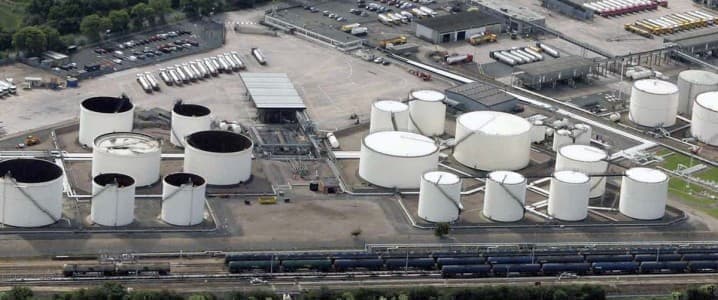
Earlier this week, the Biden administration rejected the first bids from companies offering to sell crude oil into the strategic petroleum reserve of the country.
The tender followed a record release of 180 million barrels throughout 2022. And that 180 million barrels may never be returned to the SPR. “DOE will only select bids that meet the required crude specifications and that are at a price that is a good deal for taxpayers,” the Department of Energy said in a statement following the failed tender, which invited bids for a modest 3 million barrels. And this statement reflects what many feared last year when President Biden first said the administration would sell oil from the SPR to lower gasoline prices.
First, there is the crude specifications issue. When the administration was releasing crude from the SPR, there wasn’t any mention of specifications. The only important thing was the volume. At the time, critics noted that the SPR contains mostly light, sweet crude, and the release of 180 million barrels of that variety won’t make much of a difference in gasoline prices because U.S. gasoline is made by blending light with heavy crude.
Yet the oil market moves in strange ways, and sometimes it’s enough to release several million barrels into the market to convince traders there’s plenty more where these came from. Fuel prices in the U.S. fell, especially as the release coincided with persistent inflation that shrank consumption.
Second, however, comes the issue of price. The Department of Energy had said at the end of last year it would only start buying oil for the SPR once the price of WTI falls to around $67-70 per barrel. Right now, WTI is trading at around $75. Yet this price appears to be insufficiently low for the DoE. And this is a problem because the total release from the SPR was not the original 180 million barrels, but more than 220 million barrels of crude.
This is problematic for more than one reason. First, because the SPR is at the lowest level since the early 1980s and, as some analysts have pointed out, it is a strategic reserve, meant to be there for times of emergency. So, if an emergency does occur, strategic oil reserves would be lower than they should be.
The second reason this is problematic is that what the administration hoped to achieve with its offers to buy crude for the SPR was not just replenishing the reserve but motivating higher oil production from local companies. And local companies appear to remain unmotivated to do that.
Production is already getting costlier for most oil companies in the U.S., according to industry executives. Even though there is optimism in the oil patch, according to the latest Dallas Fed energy survey, it is moderate and guarded, and nobody is in a rush to boost production at current oil prices. It can’t have come as a surprise: U.S. oil producers were not boosting production when prices were significantly higher, either.
A bigger problem, however, is whether the Department of Energy can afford to refill the SPR, as Wall Street Journal’s Jinjoo Lee suggested in a recent article. And the answer to this question may well be “No.”
Lee reports that the sale of 180 million barrels of crude from the SPR last year probably generated some $17.3 billion in proceeds at an average price of $96 per barrel. But of this $17.3 billion, $12.5 billion was set aside for use by Congress in the latest spending bill to fill the gap left by the cancellation of previously scheduled SPR sales for the period 2024 to 2027, according to ClearView Energy Partners.
This leaves the DoE with $4.8 billion to spend on replenishing the SPR, and, according to Lee, this could only buy 70 million barrels at WTI prices of $70 per barrel. This is less than half of what was released last year.
Yet even if WTI does fall to $70 and the DoE begins buying crude, sooner or later, this very fact of buying crude for the SPR might push prices higher, further reducing the purchasing power of the administration.
What this suggests is that refilling the strategic petroleum reserve will be a lot more challenging than tapping it to reduce prices at the pump. Some analysts have argued that the SPR is irrelevant, anyway, in this day and age. Others have repeatedly noted that it is called strategic for a reason—and it is a very good reason.
Whether it is relevant or not, the SPR will remain at lower than normal levels for quite a while, potentially. That won’t be only because of the unappealing offers the DoE is making producers but because exports of both crude and fuels to Europe are going strong and about to get stronger after February 5, when the EU embargo on Russian fuels kicks in.
By Irina Slav for Oilprice.com
Source:https://www.oilandgas360.com/
